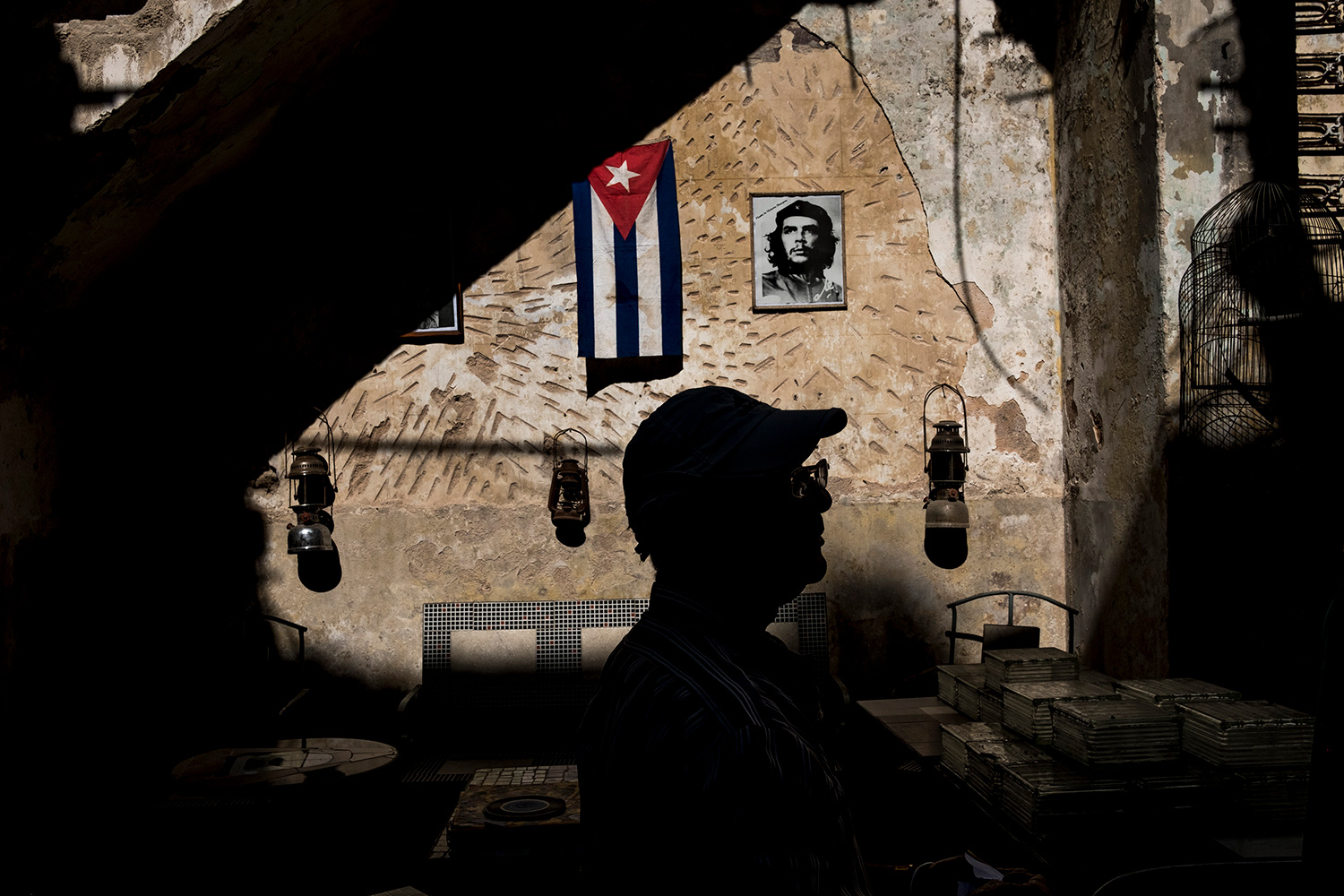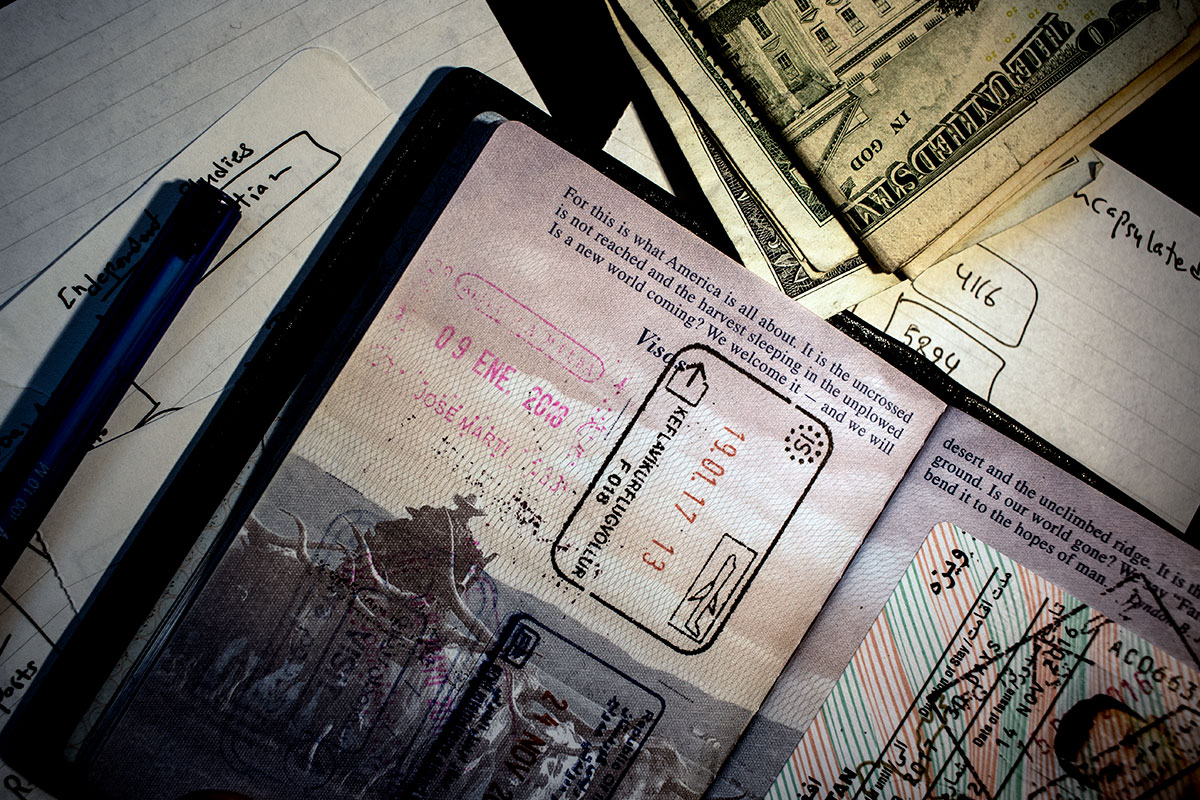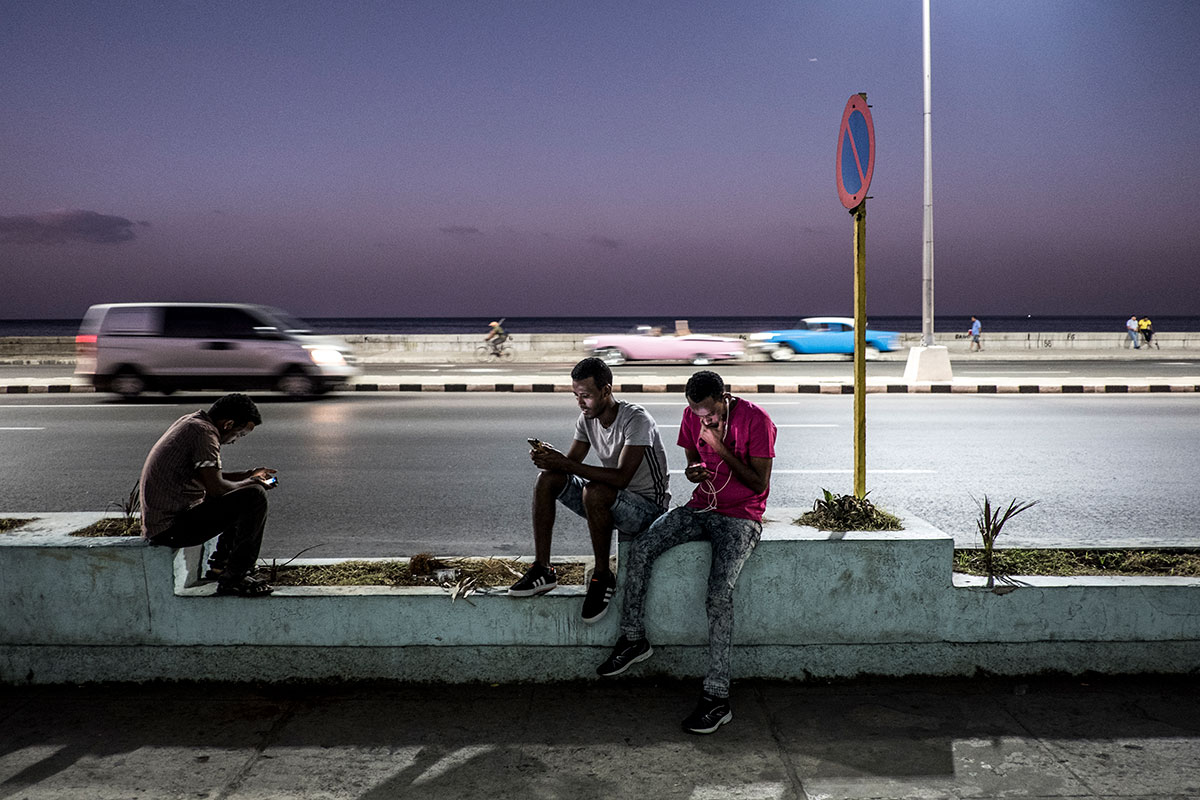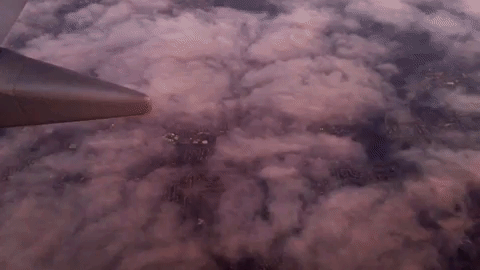Cuba: A Culture Encapsulated
By Moe Zoyari
A salesman is silhouetted in a local market in Havana, Cuba.
My first trip to Cuba happened unexpectedly. I was in Mexico working on a photo project when a friend from San Francisco, who is a great travel companion, asked me if I would go to Cuba with him. In less than a few hours, we purchased our tickets. That was back in 2015, when US citizens weren’t permitted to travel directly to Cuba. Today, restrictions still exist, but “journalistic activity” is one of 12 valid reasons for Americans to travel to the island.
We flew in a modern aircraft, but when we got landed, it felt like we had taken a time machine back to the past. Vintage American and Russian filled the streets of Havana. There was little internet access. People played dominoes and old international news headlines spread by word of mouth. A few times, I felt like a fortune teller after using my satellite phone because I knew what was happening a few days ahead of them.
An entry stamp of Cuba is seen in my American passport.
An animation map shows the flight route of 1327 miles from Chicago to Havana.
A JetBlue airplane descends to land into Havana, Cuba.
JetBlue airplanes taxi at O’hare airport in Chicago, IL, USA.
Traffic moves on Malecon highway in Havana, Cuba.
Cuba on the first sight
For $25 a night, we rented a huge house that used to be a bank. For us, that was cheap, but it’s what a Cuban doctor earns in a month. Water pressure was weak, making it hard to take a shower. Shampoo, like many other household items, was a luxury.
Because of this scarcity, Cubans took good care of what they had. If something broke or got lost, they knew it would take months for it to be repaired or replaced. They learned to take good care of their lives and their communities, too.
As a result, the people we met seemed truly happy. Despite having so little, they had so much. This layered culture intrigued me, so I returned four more times to document the life of contemporary Cubans, which you can see a glimpse of in this book.
Clockwise starting at the top left: Portraits of Cuban revolution leaders are seen through an old car in Havana, Cuba. / Cubans do their errands in Havana, Cuba. / A store is seen in Havana, Cuba. / Cubans and tourists talk and smoke in Havana, Cuba.
A woman hangs bed sheets to dry in Havana, Cuba.
Havana is a time capsule, teleporting visitors back to the dreamy mystique of the 1950s. In 1960, the United States placed an embargo on exports to Cuba of everything except food and medicine, and in 1962 el bloqueo, "the blockade,” to cover almost all exports. This had large economic implications for Cuba, severely limiting income and consumer goods.
The results of the embargo are everywhere, from empty store shelves to Russian Lada cars on the streets. Old houses beg to be painted. Residents hawk cigars. But there’s also rhythm. One hears live music in the streets and catches glimpses of dancers through half-closed house doors. .
Clockwise starting at the top left: A man sitting in his vintage car backs up into traffic in Havana, Cuba / Marcos, a professional skateboarder jumps in front of a mural of Che Guevara, Argentine revolutionary and guerrilla leader in Havana, Cuba. / Alayo, 61, a Cuban painter poses for a photographer in his studio in Havana, Cuba / Cubans smokes cigarets as they chat at a market in Havana, Cuba. / A man sits in his vintage car in Old Havana, Cuba / Cubans play dominos in Havana, Cuba.
A Cuban fisherman tries to catch some food, right after the sunset in Havana, Cuba.








































































